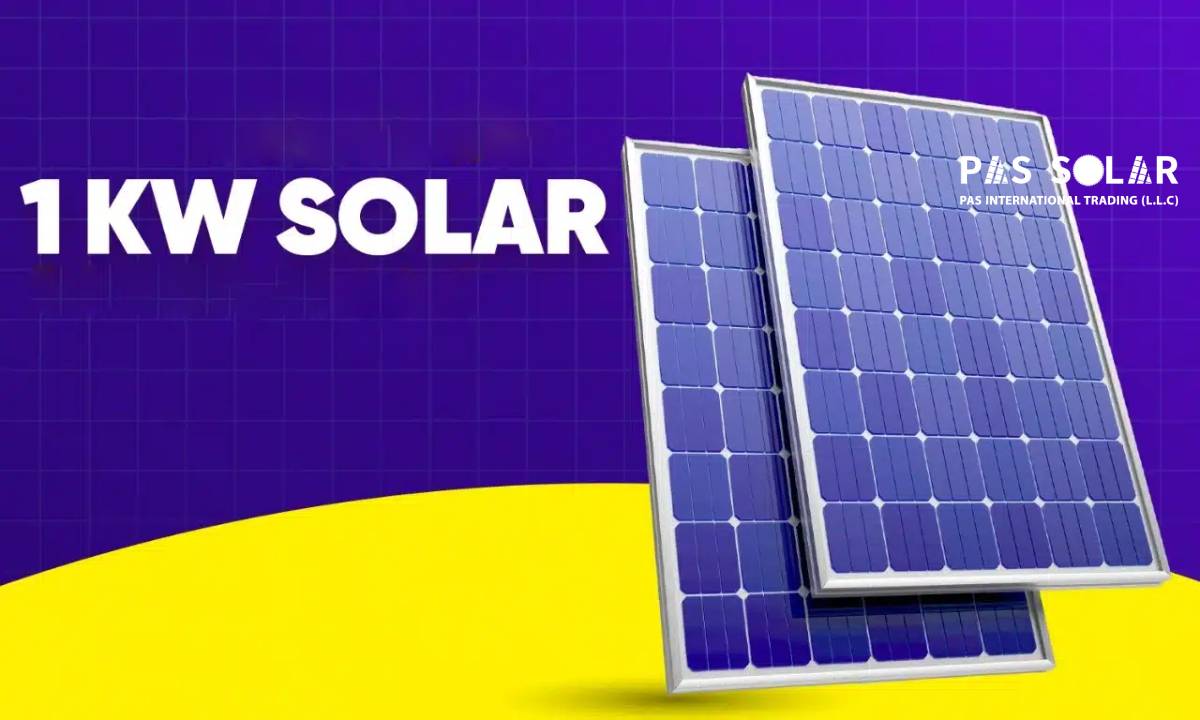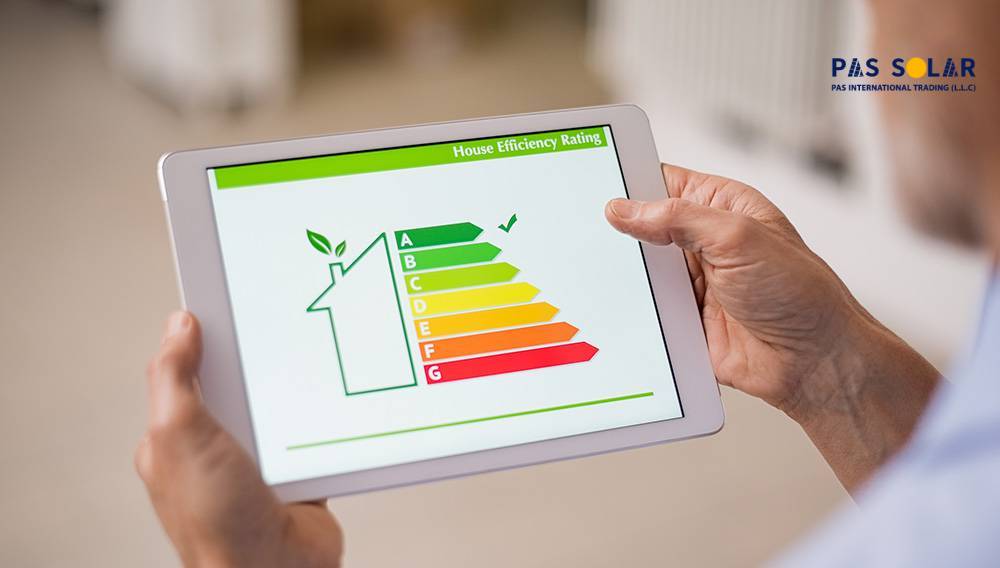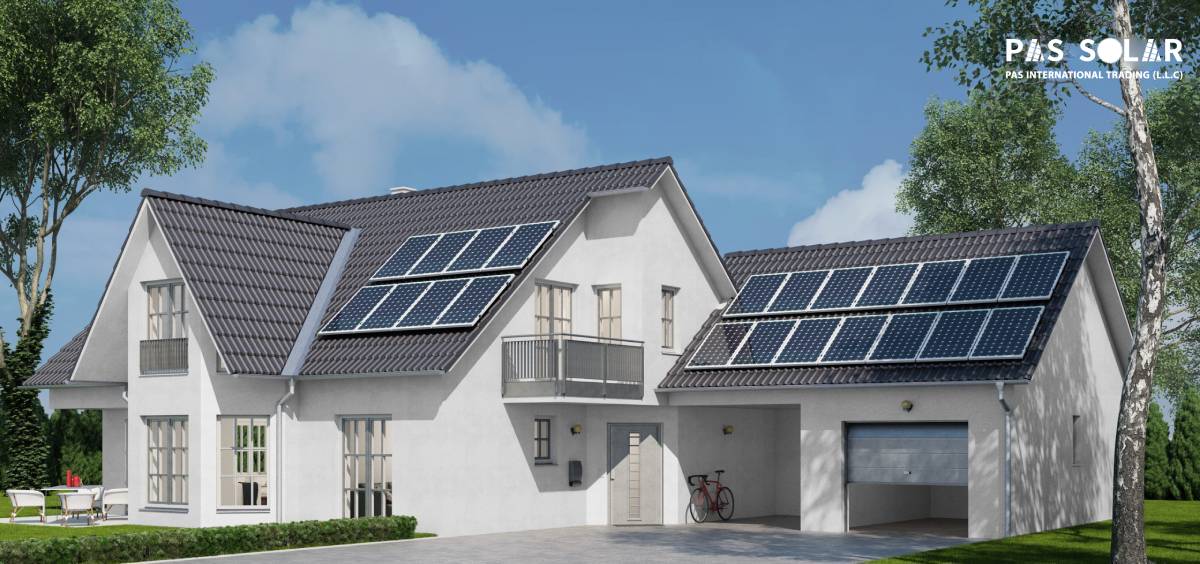

Imagine waking up to a beautiful, bright, sunny morning, and discovering that the power lighting your home is clean, green, and economical. Solar power has become a popular choice for homeowners worldwide as a smart way to reduce electricity bills and carbon emissions. But what all potential buyers really want to know is: how many solar panels to run a house are actually needed to make this dream a reality?
If you’re looking for reliable solar products in UAE, choosing high-quality panels can help you power your home efficiently and reduce long-term costs.
| Step | Details | Example / Data | Goal / Outcome |
|---|---|---|---|
| 1. Check Your Energy Use | Review your monthly electric bills | Monthly usage: 900 kWh | Find annual & daily consumption |
| 2. Calculate Daily Usage | Annual usage ÷ 365 | 10,800 ÷ 365 = 29.6 kWh/day | Baseline for panel count |
| 3. Choose Panel Wattage | Most residential panels: 250–370W | Example: 300W panel | Know each panel’s output |
| 4. Determine Sunlight Hours | Depends on your location | California: 5.5 hrs/day | Estimate daily energy production |
| 5. Use the Formula | Daily kWh ÷ (Panel kW × Sunlight hours) | 29.6 ÷ (0.3 × 5) = ~20 panels | Estimate total number of panels |
| 6. Off-Grid System | Requires battery & backup | 30 ÷ (0.3 × 4) = ~25 panels | Ensure energy independence |
| 7. Key Influencing Factors | Location, roof space, panel efficiency, energy habits | More sun = fewer panels needed | Optimize system design |
| 8. Use a Solar Calculator | Input your usage & location | Solar panel calculator tool | Get a more accurate result |
| 9. Consult a Pro Installer | On-site inspection for shading, roof direction, etc. | Custom recommendations | Ensure optimal performance |
| 10. Final Takeaway | Average home needs ~20–25 panels (300W) | Depends on usage & sun hours | Design a cost-effective system |
If you have ever asked yourself, How do I calculate how many solar panels I will need to power my home, then you are in the correct place. In this complete guide, we will inform you of all that you wish to know so that you will be able to calculate the proper number of solar panels for your home, either to fully power your home off-grid or just to account for your current use.
Let’s move beyond the numbers and see how solar panels actually work. Solar panels harness sunlight to generate electricity through photovoltaic cells. How much energy a panel generates depends on its wattage, efficiency, sun exposure, and shading.
Some basic definitions to become comfortable with:
Watt (W): The power output of a solar panel.
Kilowatt (kW): 1,000 watts.
Kilowatt-hour (kWh): Energy units consumed or generated in one hour.
Your goal is to match or exceed your household energy consumption with the energy your solar system generates.

Your Home Energy Requirements
The beginning of how many solar panels do I need to power a house is determining your energy consumption.
Look at your past electricity bills in an effort to calculate your average monthly electricity use in kWh.
Example:
Average monthly use: 900 kWh
Multiply the monthly rate by 12:
900 kWh x 12 = 10,800 kWh per year
Divide annual use by 365:
10,800 kWh / 365 ≈ 29.6 kWh per day
This is a reference point of how much electricity your house uses on a daily basis.
After being informed about the above, you can calculate how many solar panels you need to supply electricity to a house. You will require data regarding the wattage of panels and the number of average sun hours your region receives.
Average ratings of most residential solar panels lie between 250W and 370W.
Example:
For example, using 300W panels
The average most hours of sun vary by geography.
As an example:
| Location | Peak Sunlight Hours per Day |
| uae | 5.8 |
| California | 5.5 |
| Texas | 5.2 |
| New York | 4.0 |
| London, UK | 3.5 |
Receiving approximately 5 hours of good sunlight each day for your location.
The formula is:
Number of panels = Daily energy requirements in kWh / (Panel wattage × Maximum sunlight hours)
Using the values:
Number of panels = 29.6 kWh / (0.3 kW × 5 hours) = 29.6 / 1.5 ≈ 20 panels
You would thus need approximately 20* 300W solar panels to power your home.

When you’re designing a solar panel system for your home, the first things to remember are:
In an average home with average consumption (~900 kWh/month):
Around 2025, panels of 300W each would suffice.
For the scenario of off-grid homes, when you wish to be entirely independent of the grid, other considerations are used.
In order to power a home off-grid, you will require a larger installation to provide energy independence even during cloudy conditions or winter.
If you’re planning to go off-grid, pairing your solar setup with a reliable Growatt off-grid inverter ensures efficient power conversion and energy independence, even on cloudy days.
larger capacity batteries to store energy
larger solar array to compensate for a weaker sun
backup systems for cloudy days
If your daily need is 30 kWh and you have an average of 4 peak sunlight hours:
Number of panels = 30 kWh / (0.3 kW × 4 hours)
= 30 / 1.2≈ 25 panels
You will also need a large battery bank and perhaps a generator for backup.

Though the following calculations are a great beginning, there are several variables that will influence the calculation at the end:
Sunshine Exposure and Location: The sunnier, the lower the number of panels.
Roof Space Available: Too little roof space to limit the number of panels.
Efficiency of Panels: More efficient panels generate more power per unit area.
Usage Patterns for Energy: Excessive use during periods of high sun may necessitate a larger system.
Future Demand: Project future energy demand in case you would need additional appliances or electric vehicles.
1. Calculate Your Energy Use
Take your recent electricity bills and calculate your yearly and daily average usage.
2. Check Out Your Roof Space
Ensure your roof is spacious enough and suitably oriented (south-facing in the northern hemisphere).
3. Use a Solar Calculator
Computer software, like how many solar panels do I need calculator, can also provide a more accurate estimate based on your usage and location.
4. Get Expert Advice
If you do not wish to do it yourself, you can hire a solar panel installation professional who will visit your place and give you personalized advice.
There isn’t a straightforward answer, but a typical American home consumes around 900 kWh per month, and it would require roughly 2025 solar panels of 300W each. This would be dependent on location, usage, and system efficiency, however.
For individuals who wish to know how many solar panels do I install to supply a house off the grid, be prepared to install a larger system with more panels and batteries. Similarly, for solar powering a complete house, proper planning, i.e., backup and batteries, is essential.
To determine how many solar panels do I need to light a house, you have to know your energy demand, location, and roof size. With the right calculation and guidance from a professional, you are able to design a solar system that will be ideal for your needs, whether partial offset or total off-grid independence.
Checking a reliable solar inverter price list can help you budget accurately and design a system that efficiently powers your home.
Go solar today and take a quantum leap towards a greener, cleaner tomorrow! And in making the choice of equipment, Growatt is a name that is a trusted partner in solar technology.
Ready to harness the power of the sun? Start calculating your needs today and turn your home into a sustainable energy hub!
Number of panels = Daily energy requirement (kWh) / (Wattage of each panel in kW × Number of hours of sunlight).
This will give you an estimate of how many panels would be required to meet your house’s needs.
Certain aspects determine the overall number of panels needed, such as the sunniness of your area, roof space, panel efficiency, your usage patterns, and future energy needs. The more sun and more efficient the panels, the less the need, while a smaller roof space or increased energy consumption increases it.
3. How many solar panels are typically required to fully power an average home?
For an average home with a usage of approximately 900 kWh per month, 20 to 25 300-watt panels would do. That may vary depending on your location, available roof space, and system efficiency. Lower households or lower usage will require less panel, and higher usage or larger homes will require more.
4. What are the requirements that I must consider if I want to energize my house off-grid using solar panels?
Off-grid solar systems require additional installation and more panels to become energy independent, especially during cloudy days or winter. You would require large batteries to supply power, a larger solar array to offset less sunlight, and backup units such as generators for cloudy days. Planning effectively ensures supplying power economically without using the grid.
While estimates are a reasonable estimation, professional solar installers can analyze your unique circumstances, such as the direction, shading, and available roof space. They can offer specific suggestions, ensure efficient systems, and solve more complex issues like future energy needs and system design, leading to a more stable and optimal solar installation.
| Feature / Brand | Growatt | Huawei | SMA |
|---|---|---|---|
| Origin | China | China | Germany |
| Efficiency | 97.5% – 98.4% | 98.6% – 98.7% | 97.0% – 98.0% |
| Price Range | Affordable | Mid-to-High | Premium |
| Popular Models | MIN 5000TL-X, SPF 5000 ES | SUN2000 Series | Sunny Boy, Sunny Tripower |
| Off-grid Capabilities | Yes (with hybrid options) | Mostly grid-tied | Mostly grid-tied |
| Monitoring App | ShinePhone (iOS & Android) | FusionSolar App (iOS & Android) | Sunny Portal, SMA Energy App |
| Smart Features | WiFi, battery-ready, remote monitoring | AI-powered optimization, smart PV safety | Reliable grid management features |
| Warranty | 5–10 years (extendable) | 10 years standard | 5 years (extendable to 10/15/20) |
| Battery Compatibility | Lithium & Lead-Acid | Huawei LUNA Battery | Various third-party options |
| Best for | Budget-friendly hybrid systems | Smart, connected grid-tied systems | Premium, long-lasting grid-tied setups |
Choose Growatt if you’re looking for cost-effective hybrid systems with off-grid capability and decent smart features.
Choose Huawei if you want cutting-edge technology, higher efficiency, and AI-based smart monitoring for grid-tied homes.
Choose SMA if you prefer a German-made, highly reliable brand with top-tier durability and grid performance.
PAS SOLAR is a Distributer of solar equipment based in UAE. Composed of a team of professionals with the goal to provide customers with the latest Tier 1 Solar system in the region.
"*" indicates required fields